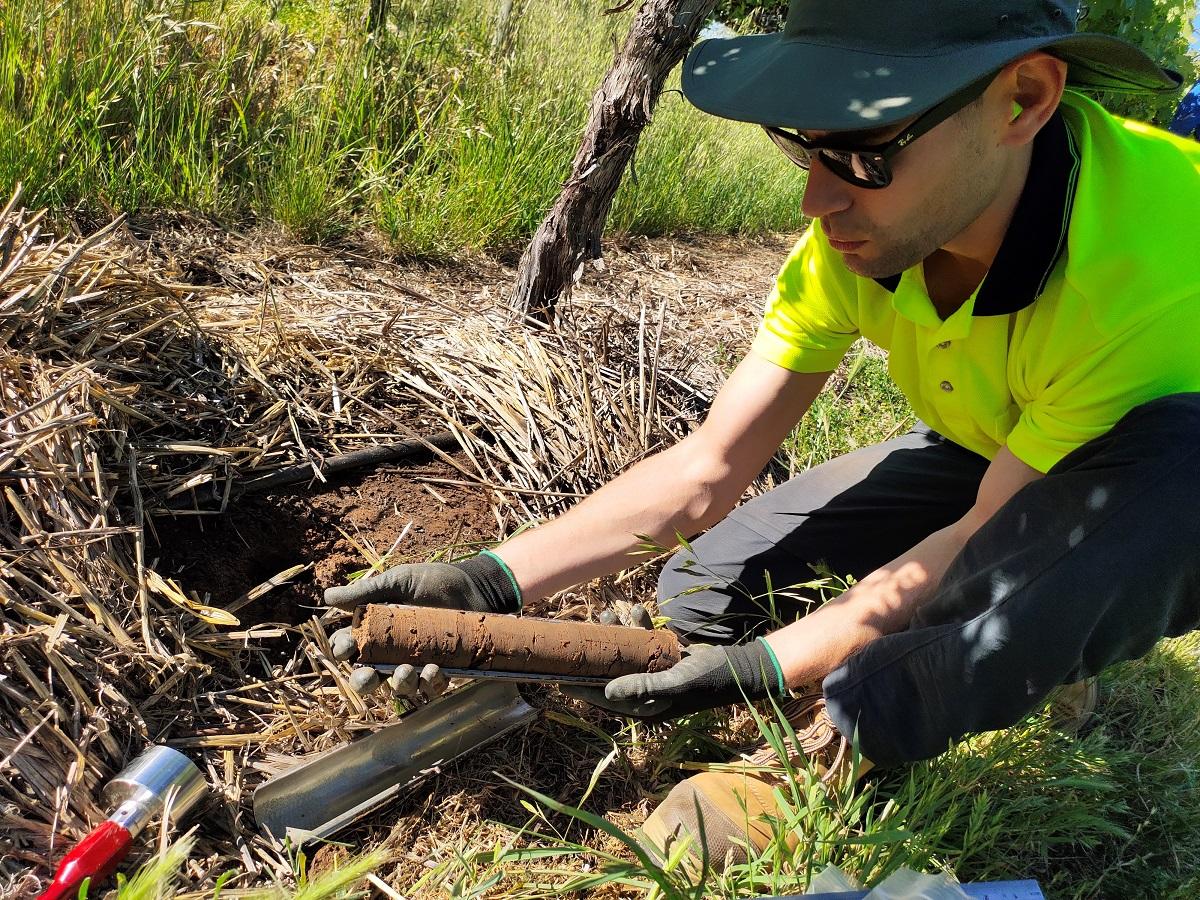Soil carbon increases under cover crops

Researcher Joseph Marks with a split core sample of soil that is used to analyse carbon levels of cover crops planted below grapevines.
Planting cover crops directly underneath grapevines can help mitigate the effects of climate change and improve land sustainability, research conducted by the University of Adelaide has found.
The level of soil organic carbon (SOC) was almost 23 per cent higher in areas that had cover crops directly below vines, when compared to a standard method of spraying herbicide on the soil.
Increasing levels of SOC can promote soil structure, improves soil aeration, water drainage and retention, along with removing carbon dioxide from the atmosphere.
Lead author Joseph Marks, a PhD student with the University, said while the benefits of planting cover crops between the rows of vineyards was well known, less research had been conducted on the effects of under-vine cover crops.
“We found that cover crop-managed soil under-vine retains up to 23 per cent more soil organic carbon (SOC) as the traditional, herbicide practice over a five-year period of growth,” Mr Marks said.
“Microbial activity increased by more than double in cover crop soils, owing to an increase in dissolved organic carbon and that there is evidence for more resistant carbon in cover crop soils.
“These results suggest that cover crop management under-vine is a potential solution to increase SOC stocks within vineyard systems.
“Taken together, the results of this study indicate that a shift from bare earth to cover crops in the under-vine region has the potential to contain carbon in vineyard soils.”
"The results of this study indicate that a shift from bare earth to cover crops in the under-vine region has the potential to contain carbon in vineyard soils.”PhD student Joseph Marks
The study was conducted on two vineyard sites established in 2014, examining soil from four different treatments, including two cover crop combinations, a straw mulch and a herbicide-managed control.
Soils were sampled under-vine to depths of up to 30cm, and were analysed for concentrations of soil organic carbon and bulk density, to determine the level of soil organic carbon in the soil.
Cover crops are planted to provide soil cover rather than for the purpose of being harvested.
They are used to slow erosion, improve soil health, enhance water availability, smother weeds, help control pests and diseases and increase biodiversity.
Dr Thomas Lines, Chris Penfold and Professor Tim Cavagnaro also contributed to the research.
The findings of the research were published in Science of The Total Environment.
The research wouldn’t have been possible without Wine Australia, who provided support through its top-up scholarship program and awarded Mr Marks the inaugural Dr Tony Jordan OAM Award in 2020, providing additional funds towards his research.
Media contacts:
Joseph Marks, PhD candidate, School of Agriculture, Food and Wine, Waite Research Institute, The University of Adelaide. Mobile: +61 (0)413 937 130, Email: joseph.marks@adelaide.edu.au
Lee Gaskin, Senior Media and Communications Officer, The University of Adelaide. Mobile: +61 (0)415 747 075. Email: lee.gaskin@adelaide.edu.au
